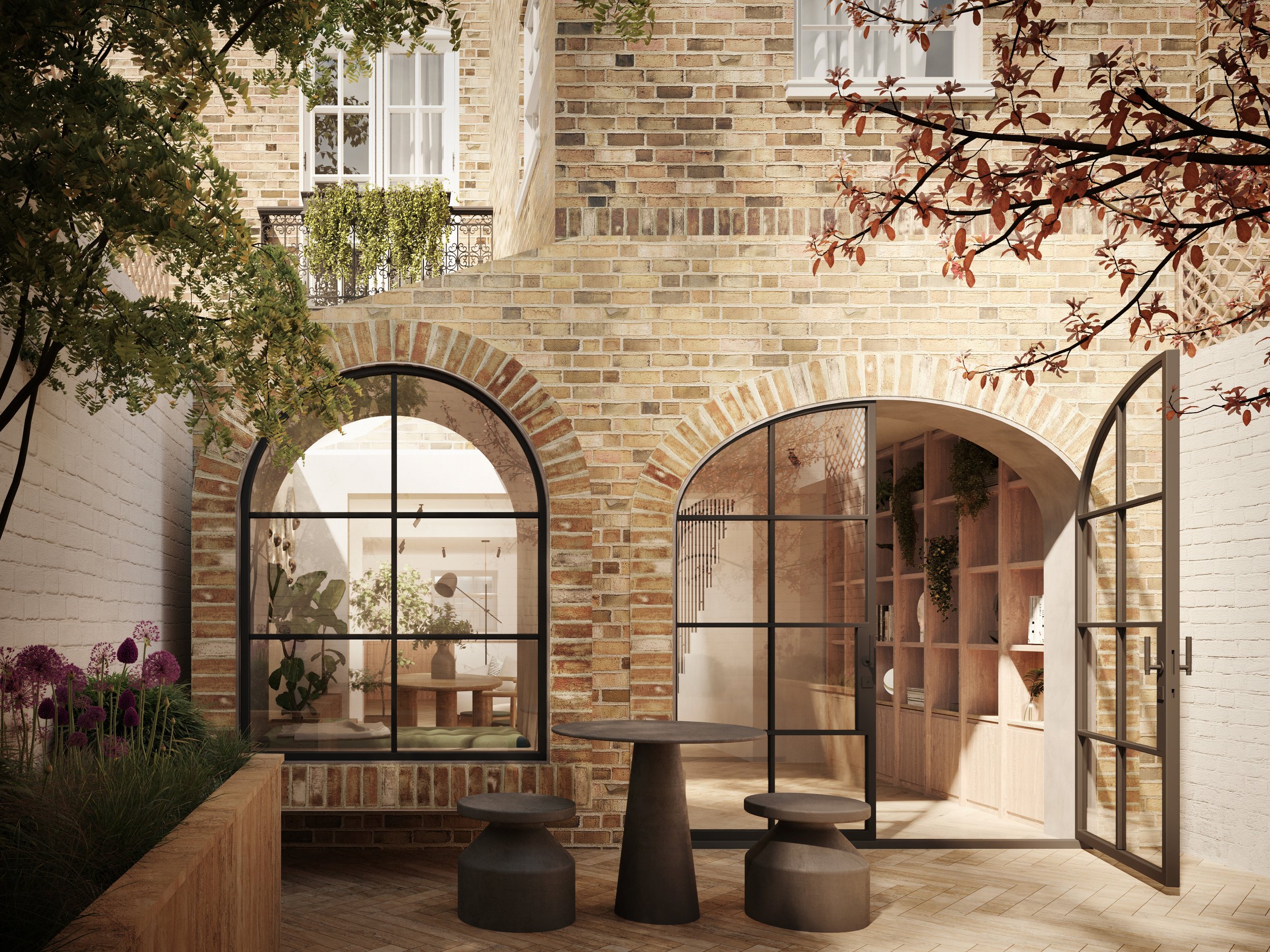Understanding the RIBA Stages of Work: A Guide for Homeowners Planning a Building Project
If you’re considering a building project - whether a home extension, refurbishment, or even a new build, you’ve probably come across architects mentioning “RIBA stages” as part of the process. But what does this actually mean? And why is it important for your project?
The RIBA (Royal Institute of British Architects) Plan of Work is the industry-standard framework that architects use to guide projects from concept to completion. It breaks the process down into clear stages, ensuring that every aspect of your project is carefully considered and managed. This structure helps keep things organised and avoids costly mistakes.
At Nancy Gouldstone Architects, we follow the RIBA framework but simplify it into three distinct NGA Stages (A, B, and C) that align more naturally with residential projects. We also find that for most people it is easier to understand these three stages as they relate to clearly identifiable deliverables in the process whereas the RIBA framework can be difficult for homeowners to engage with. Thes NGA stages reflect the key phases homeowners typically experience:
Stage A: Pre-Construction & Planning (RIBA Stages 0–3) – Concept development, feasibility studies, planning permissions, and early design work.
Stage B: Detailed Design & Pre-Build Preparation (RIBA Stages 3& 4) – Design development, Full technical design, building regulations, tendering, and contract administration before construction begins.
Stage C: Construction & Completion (RIBA Stages 5–7) – Managing the build, overseeing quality on-site, and ensuring a smooth handover.
This structure provides clarity for our clients, ensuring a clear journey from first ideas to moving into your finished home. Below, we break down how the traditional RIBA stages fit within our streamlined approach.
The RIBA Plan of Work
The RIBA Plan of Work (and How It Relates to NGA Stages)
RIBA Stage 0: Strategic Definition (NGA Stage A – Pre-Construction & Planning)
Before any design work begins, we define the project’s objectives. This includes understanding what you want to achieve—whether it’s adding space, improving natural light, or maximising your home’s value. We also assess feasibility, potential planning constraints, and whether additional surveys or reports are required.
RIBA Stage 1: Preparation and Brief (NGA Stage A – Pre-Construction & Planning)
This is where your ideas start to take shape. We work closely with you to develop a clear brief, outlining your needs, budget, and design preferences. Initial site surveys are carried out, and we start discussions with relevant consultants. If planning permission is required, we identify key considerations early on.
Ashdown Forest house - Concept model & visualisation (NGA Stage A, RIBA stages 0-2)
RIBA Stage 2: Concept Design (NGA Stage A – Pre-Construction & Planning)
Now, the design process begins. We explore different design options, considering your requirements, site constraints, and planning policies. By the end of this stage, you will have a developed concept supported by sketches and plans, along with an initial cost estimate.
RIBA Stage 3: Developed Design (NGA Stage A – Pre-Construction & Planning & NGA Stage B )
At this stage, the preferred design is refined in more detail. At NGA this work will span across our preliminary design stage where we create a resolved and realistic outline design scheme. If planning permission is required, we prepare and submit the application, liaising with the local authority.. During the planning stage depending the project’s requirements, a higher level of detail may be required with details such as windows, doors and materials needing to be specified. After planning, we start on NGA Stage B and at this stage we now take the outline preliminary design and start to resolve it at a high level of detail. We coordinate structural, mechanical, and electrical aspects and integrate specialist input such as lighting or sustainability consultants. While RIBA classifies Stage 03 developed design and Stage 04 Technical design as two distinct stages, at NGA we find that as the project gets defined to a highly specific and technical level of detail, the design will evolve during this period and therefore we classify some of RIBA Stage 03 and all of RIBA Stage 04 as NGA Stage B.
RIBA Stage 4: Technical Design (NGA Stage B – Detail Design & Pre-Build Preparation)
This is where your project becomes fully detailed and ready for construction. We prepare comprehensive technical drawings and specifications for building regulations compliance and tendering to contractors. If appointed as the Contract Administrator and Quantity Surveyor, this stage also includes the tendering process where the works are defined in an excel format ‘Schedule of works’ along with a full pack of the relevant drawings and specifications and are sent out as a competitive tender for contractors to price from. Once a contractor has been chosen, a contract package would be produced, which sets out roles, responsibilities, and legal agreements before work starts on site.
Our Brompton Townhouse project - At the Destail Design stage - RIBA Stage 04, items such as the exact bricks are chosen, the exact design of the windows and doors and the choice of floor tiles, joinery and lighting specification
RIBA Stage 5: Construction (NGA Stage C – Construction & Completion)
With a contractor appointed, the project moves on-site. As your architect, we remain involved to oversee the construction, answer queries, and ensure the design intent is followed. Regular site visits and meetings keep the project on track, and we assist in resolving any unforeseen issues. If required, we can also act as the Contract Administrator and Quantity Surveyor for the site stage.
Our Georgian Listed Townhouse, completed after a full back to brick reconstruction and refurbishment
RIBA Stage 6: Handover and Close-Out (NGA Stage C – Construction & Completion)
The project reaches completion, and you move into your newly finished space. We conduct final inspections, address any snagging, and provide all necessary documentation, including warranties and maintenance guidance.
RIBA Stage 7: In Use (NGA Stage D - Retention Period)
Although construction is complete, this stage is about the long-term performance of your home and the period stated within the contract called the ‘Retention’ period of ‘Latent defects period’. The retention period ensures that any final contractor obligations are fulfilled.This is usually set at 6 months or 12 months depending on the complexity or size of the project. This allows for the project to settle and for any hidden or ‘latent’ defects to become evident, things like leaking plumbing or electrical items or plasterwork that has moved. During this period, the contract has an obligation under the contract to remedy any defects (not wear and tear). At the end of the 12 months, the contractor will be due their retention sum which relates to 2.5% of the contract value back once they have fixed all defects to the satisfaction of the contract administrator and architect. After this point the Final Completion certificate is issued.
Why we use NGA Stages (A, B, C) for residential projects
While the RIBA Stages provide an excellent framework, we find that breaking it down into three clear NGA Stages helps homeowners better understand the journey:
Pre-Construction & Planning (Stage A): All feasibility, concept, and planning work before technical design.
Final resolution of the design, Detailed Design & Pre-Build (Stage B): Everything needed to finalise and refine the design and then work up the technical details, obtain statutory approvals, and prepare for construction.
Construction & Completion (Stage C): Managing the build, ensuring quality, and providing post-completion support during the retention period.
By structuring our process this way, we make it easier for clients to see what’s coming next, when key decisions need to be made, and how different phases of their project interconnect.
Why choose a chartered RIBA practice?
As a RIBA chartered practice, Nancy Gouldstone Architects adheres to the highest professional standards set by the Royal Institute of British Architects. This means we follow rigorous codes of conduct, maintain continual professional development, and ensure our designs meet best-practice guidelines. Working with a RIBA-accredited firm provides you with confidence in the quality, expertise, and integrity of our service - ensuring that every stage of your project is managed with precision and care.
Why the RIBA stages matter
Understanding the RIBA stages helps demystify the process and gives you confidence in how your project will be managed. It ensures a logical progression from ideas to a finished building, with clear milestones along the way. By following this structured approach, we can minimise risks, control costs, and deliver a beautifully designed space tailored to your needs.
If you’re planning a project and would like to discuss how we can guide you through the RIBA stages, feel free to get in touch. We’d be happy to help bring your vision to life with a well-structured and professionally managed process.
We have also created a post on how to apply the following stages in relation to planning your own London building project - a step by step easy guide.





